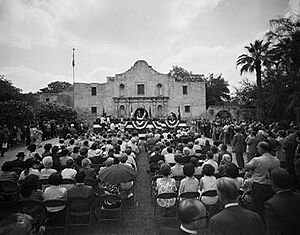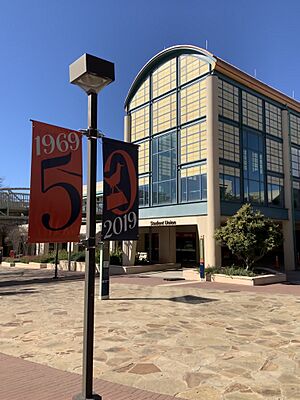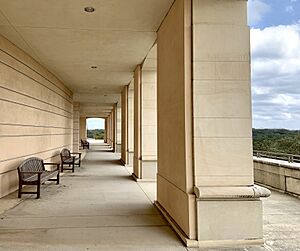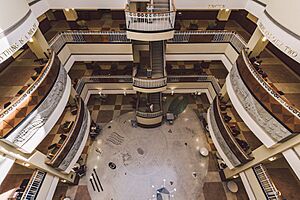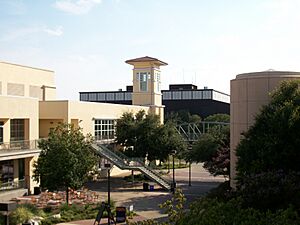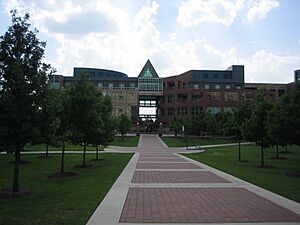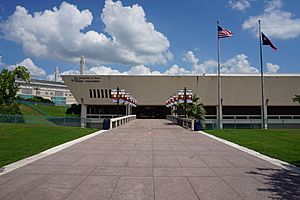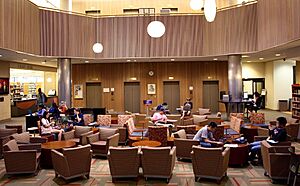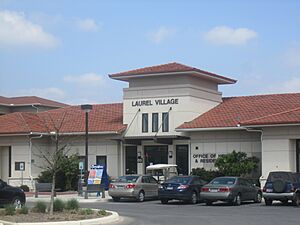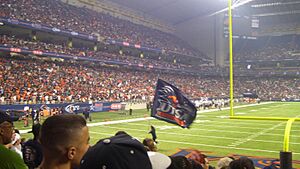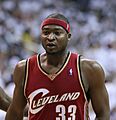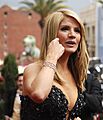University of Texas at San Antonio facts for kids
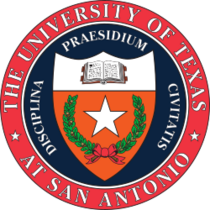 |
|
| Motto | Disciplina Praesidium Civitatis (Latin) |
|---|---|
|
Motto in English
|
"The cultivated mind is the guardian genius of democracy" |
| Type | Public research university |
| Established | June 5, 1969 |
|
Parent institution
|
University of Texas System |
| Accreditation | SACS |
|
Academic affiliations
|
|
| Endowment | $286.63 million (2023) (UTSA only) $44.97 billion (2023) (system-wide) |
| Budget | $761.47 million (FY2024) |
| President | Taylor Eighmy |
| Provost | Heather Shipley |
|
Academic staff
|
1,515 (fall 2023) |
| Students | 35,770 (fall 2024) |
| Undergraduates | 30,889 (fall 2024) |
| Postgraduates | 4,881 (fall 2024) |
| Location |
,
,
United States
29°35′00″N 98°37′15″W / 29.58333°N 98.62083°W |
| Campus | Large city, 725 acres (2.93 km2) Downtown: 18 acres Hemisfair: 4 acres |
| Newspaper | The Paisano |
| Colors | Blue and orange |
| Nickname | Roadrunners |
|
Sporting affiliations
|
|
| Mascot | Rowdy the Roadrunner |
 |
|
The University of Texas at San Antonio (UTSA or UT San Antonio) is a large public university in San Antonio, Texas, United States. It was started in 1969. UTSA is the biggest university in San Antonio. It is also the eighth largest in Texas by the number of students. Over 35,000 students attend classes across its five campuses. The university is known for its high level of research.
UTSA's sports teams are called the UTSA Roadrunners. They compete in the American Athletic Conference (AAC). The football team started in 2009. They play in the top division of college football.
Contents
History of UTSA
How UTSA Started (1969-1970s)
The University of Texas at San Antonio officially began on June 5, 1969. This happened when Governor Preston Smith signed a new law. Frank Lombardino, a state lawmaker, worked hard to make UTSA happen. He was known as the "father of UTSA."
In 1970, Arleigh B. Templeton became the first president. The university received 600 acres of land for its main campus. The campus was designed to look like an Italian village.
The first students, who were graduate students, started in September 1973. Younger students joined in 1975 and 1976. Classes were held at a temporary center at first. The Main Campus opened in 1975. At that time, about 4,433 students were enrolled. UTSA began with five main study areas.
In 1975, students and leaders chose blue as one of the university's colors. The John Peace Library opened the next year. It became the main office building.
In 1977, students voted for a school mascot. The roadrunner won the election. On December 9, 1977, the roadrunner became UTSA's official mascot.
James W. Wagener became the third president in 1978. The Alumni Association also started that year. This group helps support the university. The first Fiesta UTSA, a fun school event, was held in April 1978. By the end of the 1970s, about 9,400 students were attending UTSA.
Early Years (1980s-1999)
The Paisano, the student newspaper, started in 1981. It was the first independent student newspaper in Texas. In the fall of 1981, UTSA began playing college sports. It joined NCAA Division I right away.
In 1986, UTSA gained the Institute of Texan Cultures. This center teaches about Texas's many cultures. Also in 1986, the University Center and Chisholm Hall opened. Chisholm Hall was the first place for students to live on campus.
In 1994, the U.S. Department of Education recognized UTSA. It was named a Hispanic Serving Institution (HSI). This means it has a large number of Hispanic students.
The University Center grew in the late 1990s. A new part, called "UC Phase II," opened in 1995. It included a new auditorium and bookstore. The Downtown Campus opened its permanent location in 1997.
Ricardo Romo became UTSA's fifth president in May 1999. He planned to make UTSA much bigger and better. During his time, student numbers grew by 68%. Many new programs and buildings were added.
Growth and Development (2000-2009)
In the early 2000s, UTSA worked to become a more famous university. A "Master Plan" was made in 2007. This plan guided the university's growth. The "UTSA 2016" plan aimed to make UTSA a top research school by 2016.
From 2006 to 2009, UTSA built many new projects. These cost over $250 million. The Biotechnology, Sciences and Engineering (BSE) Building opened in 2006. It cost $84 million. Older buildings like the John Peace Library were also updated. The Applied Engineering and Technology building (AET) opened in 2009. A year later, the AET Library opened. It was the first college library in the nation with no physical books.
In November 2009, Texas voters passed Proposition 4. This law helped seven growing research universities in Texas, including UTSA. It allowed them to get more state money. This was to help them become "Tier One" research schools.
More Expansion (2010-2020)
By Fall 2013, about 60% of new undergraduate students were accepted. In 2010, UTSA reached 30,000 students. This showed a growth of over 39% in ten years. UTSA was one of the fastest-growing universities in Texas.
The North Paseo Building opened in October 2011. It houses ROTC programs. The Bauerle Road Garage, a parking building, opened in 2012. Dining options also expanded.
In 2011, the university started its football team. Larry Coker was the first head coach. In 2012, UTSA joined the Western Athletic Conference. A year later, it moved to Conference USA. A new athletic complex, "Park West," added 125 acres to the university.
In 2014, the "New" North Paseo building (NPB) was finished. It has labs and classrooms for Computer Science and Cyber Security. It also houses important security centers.
Ricardo Romo resigned as president in March 2017. Thomas Taylor Eighmy became UTSA's sixth president on September 1, 2017.
In June 2017, UTSA announced its biggest construction project ever. This was a $95 million science and engineering building. It opened in Fall 2020. In September 2018, UTSA received a $15 million gift from Graham Weston. The University of Texas System also gave $70 million. This money was for two new buildings at the Downtown Campus. These included a National Security Collaboration Center and a School of Data Science. The School of Data Science opened on January 9, 2023. It is the first and only Data Science school in Texas.
Modern University (2021-Present)
In 2021, the College of Engineering and College of Architecture, Construction and Planning joined together. They formed the new College of Engineering and Integrated Design (CEID). UTSA also took over the Southwest School of Art. It became part of UTSA's College of Liberal and Fine Arts.
By the end of 2021, UTSA achieved Carnegie Tier One research status. This means it is a top research university. The university also partnered with UTHSCSA. They created a new School of Public Health. The first students for this program started in 2024.
In September 2023, UTSA started a new dual degree program. It combines medicine and artificial intelligence. Students spend four years at UT Health SA Long School of Medicine. They then spend one year at UTSA. They earn a doctor of medicine (M.D.) and a master's degree in artificial intelligence. In January 2024, UTSA announced a new College of AI, Cyber and Computing. It focuses on artificial intelligence, cybersecurity, and computer and data science. It is set to launch in Fall 2025.
In August 2024, the University of Texas Board of Regents announced a big change. UTSA and UT Health Science Center at San Antonio are merging. They will form a "world class university in San Antonio." The new university will keep the UTSA name. Current UTSA president Taylor Eighmy will lead it.
Campuses
Main Campus
The Main Campus is the original and largest campus. It started with a 600-acre land donation. When it first opened in 1975, some people thought it was too far from the city. They even called it "University of Texas at Boerne." Before 1975, classes were held at the Koger Center.
Roadrunner Cafe, the first dining hall, was built in 2005. In 2006, UTSA bought another 125 acres of land. This was for its future athletics complex. This made the Main Campus 725 acres in total. Until 2009, it was called the "1604 Campus." It was then renamed the "Main Campus" to show its importance. Students can choose to live in many housing options on this campus.
Downtown Campus
The Downtown Campus is in Downtown San Antonio. It houses parts of several colleges. These include the College of Engineering and Integrated Design and the College of Education and Human Development. Many community centers are also located here.
Construction for the Downtown Campus began in 1993. While it was being built, classes were held at Cypress Tower. The permanent location opened in 1997. A new bus line, VIA Primo, opened in 2012. This allows students to travel easily between the Main Campus and Downtown Campus.
In 2018, President Eighmy announced a new plan for the downtown campus. It included a $15 million gift for the School of Data Science. The City of San Antonio also gave land to the university. This land is now used for the new school and other centers.
UTSA Institute of Texan Cultures
The Institute of Texan Cultures (ITC) used to host the Texas Folklife Festival. This event celebrates Texas's many cultures. The ITC was built for HemisFair '68 in 1968. Its goal was to teach about Texas history and diversity. It became a UTSA campus in 1986. It helped with historical research and had a huge photo collection.
The ITC partnered with the Smithsonian Institution in 2010. Funding for the ITC came from the state and other sources. On April 3, 2024, it was announced that the ITC building would close. The museum will temporarily operate from the Frost Tower starting in early 2025.
Park West Campus
The Park West Campus is about 2 miles west of the Main Campus. It is 125 acres. It is home to the UTSA Roadrunners soccer and track-and-field facilities. Park West also hosts community sports events. A new outpatient facility was completed by summer 2023. It helps student-athletes with medical care.
Southwest Campus
The Southwest Campus is located by the San Antonio River downtown. It has been a place of learning for over 165 years. The buildings were originally the Ursuline Convent and Academy, which opened in 1851. This campus is now part of the UTSA School of Art.
Academics and Learning
| Admissions statistics | |
|---|---|
|
2023 entering
classChange vs. 2018 |
|
| Admit rate | 88.5%
(
|
| Yield rate | 29.5%
(
|
| Test scores middle 50%* | |
| SAT Total | 1008–1200 (among 63% of FTFs) |
| ACT Composite | 19–26 (among 8% of FTFs) |
| High school GPA† | |
| Top 10% | 17%
(
|
| Top 25% | 55%
(
|
| Top 50% | 87%
(
|
|
|
The University of Texas at San Antonio has nine colleges. These include the Alvarez College of Business and the College of AI, Cyber and Computing. All programs are approved by the Southern Association of Colleges and Schools. The UTSA College of Business is also approved by a special business school group.
The College of Sciences works with other research places in San Antonio. These include Southwest Research Institute. Since 2005, UTSA and Southwest Research Institute have a joint program for space physics.
UTSA is one of the few universities with three National Center of Excellence titles from the National Security Agency. These titles are for cybersecurity.
UTSA is a Hispanic Serving Institution. In 2020, it received the Seal of Excelencia. This award recognizes schools that help Hispanic students succeed.
Students and alumni from UTSA have won important scholarships. These include the Ford Foundation Fellowship and the Fulbright scholarship. In 2021, UTSA was the only Texas university to get four Barry Goldwater Scholars awards.
The Human Health Initiative started in 2018. This led to the College for Health, Community and Policy in 2019. This new college focuses on improving human health. By Fall 2019, the number of students graduating in six years reached 50.8%.
UTSA is also an Innovation and Economic Prosperity (IEP) University. This means it helps with economic growth and innovation.
Colleges at UTSA
- Alvarez College of Business
- College of AI, Cyber and Computing
- School of Data Science
- College of Education and Human Development
- Klesse College of Engineering and Integrated Design
- College for Health, Community and Policy
- Honors College
- College of Liberal and Fine Arts
- College of Sciences
- University College
University Rankings
| ARWU World | 601-700 |
|---|---|
| USNWR National University | 231 (tie) |
| Washington Monthly National University | 93 |
| Biological Sciences |
144 (tie) |
| Business |
Unranked |
| Chemistry |
119 (tie) |
| Computer Science |
120 (tie) |
| Education |
114 (tie) |
| Engineering |
136 (tie) |
| English |
131 (tie) |
| Fine Arts |
135 (tie) |
| Mathematics |
173 (tie) |
| Physics |
167 (tie) |
| Psychology |
165 (tie) |
| Public Affairs |
144 (tie) |
| Social Work |
77 (tie) |
| Statistics |
79 (tie) |
U.S. News & World Report ranks UTSA among the top national universities. In 2025, it was tied for 231st. It was also tied for 126th among public schools in the U.S. UTSA was ranked 44th for helping students move up in society. It was also tied for 53rd for being one of the most innovative schools.
In 2020, Intelligent.com ranked UTSA's online cybersecurity program 15th in the nation. It was also first in the nation for student support. It was the top online cybersecurity program in Texas.
CEO Magazine ranked UTSA's Executive M.B.A. program 8th globally in 2020. UTSA's regular M.B.A. program was also ranked as a top-tier global program.
In 2023, U.S. News and World Report ranked UTSA's online programs 85th. This made it the top online program in San Antonio.
Research at UTSA
UTSA is known as an "R1: Doctoral University – Very High Research Activity" school. It is also a "Texas Tier One" institution. In 2022, UTSA spent $141.7 million on research. Students and teachers do research in many areas. These include advanced materials and cybersecurity. UTSA has 33 research centers. It is also part of the National Academies' Government-University-Industry Research Roundtable.
A 2007 study showed UTSA was fifth among large research universities in Texas. This was for how much research its teachers published. The Office of the Vice President for Research publishes "Discovery." This magazine highlights research and creative work at UTSA.
UTSA has the Curtis Vaughan Jr. Observatory. It is also part of the Association of Universities for Research in Astronomy (AURA). This group runs top astronomy observatories for NASA and NSF.
The UTSA Center for Advanced Measurements in Extreme Environments (CAMEE) works with NASA. They research in very difficult environments. They also study travel at super-fast speeds.
The U.S. Department of Energy chose UTSA to lead the Cybersecurity Manufacturing Innovation Institute (CyManII). This institute focuses on making things more energy-efficient and secure. The National Security Collaboration Center (NSCC) at UTSA is home to CyManII.
UTSA also ran the Center for Archaeological Research. In 1984, they studied the old Hot Wells hotel and spa. In 2015, work began to restore Hot Wells.
Special Programs
FAME Program
In 2013, UTSA started the Facilitated Acceptance to Medical Education (FAME) program. This is a fast-track medical program for high school seniors. Students complete three years at UTSA. Then they go to UT Health-San Antonio for medical school.
Bold Promise Program
In December 2019, UTSA created the Bold Promise program. This program helps students from middle and low-income Texas families. It covers 100% of their tuition and fees for eight semesters. This is paid for by scholarships and grants.
UTSA Top Scholar Program
The UTSA Top Scholar program started in Fall 2013. It is for high-achieving students. It offers a four-year scholarship. It also provides special experiences in academics, leadership, and service. This includes chances to study abroad.
Dual Degree in Medicine and AI
This is the first dual degree in the U.S. to combine medicine and artificial intelligence. Medical students spend four years at the UT Health SA Long School of Medicine. They spend one year at UTSA. They earn a doctor of medicine and a master's degree in artificial intelligence.
Student Life
| Race and ethnicity | Total | ||
|---|---|---|---|
| Hispanic | 61% |
|
|
| White | 19% |
|
|
| Black | 8% |
|
|
| Asian | 6% |
|
|
| Two or more races | 3% |
|
|
| International student | 1% |
|
|
| Unknown | 1% |
|
|
| Economic diversity | |||
| Low-income | 43% |
|
|
| Affluent | 57% |
|
|
UTSA has 350 student organizations. Some groups get money from the university. These are the only ones that can use "UTSA" in their name.
Beaks Up Speak Up teaches students how to be active bystanders. This means helping others when they might be in danger. The group holds workshops on topics that affect student well-being.
The Campus Activities Board (CAB) plans big events. These include Best Fest and Fiesta UTSA. They also organize homecoming activities.
The College Democrats and College Republicans at UTSA started in the late 1970s. They have invited important public figures to campus.
Where Students Live
UTSA offers several places for students to live on campus:
- Alvarez Hall: This is a four-story residence hall. It opened in 2013 and houses 618 students. It has special interest communities for students studying engineering or honors.
- Blanco Hall: A new residence hall for first-year and sophomore students. It is expected to open in June 2025. It will house 594 students.
- Chaparral Village (Chap): These are apartment-style suites. They have private bedrooms and living rooms. About 1,000 students live here. They have pools and basketball courts.
- Chisholm Hall: This is the oldest housing complex. It opened in 1986. It is a four-story dorm for about 500 students. It has study areas and a community kitchen.
- Guadalupe Hall (Guad): This residence hall is for honors students. It opened in 2021. It has dorm rooms, a kitchen, and study spaces.
- Laurel Village (Laurel): This complex opened in 2008. It houses 678 students. It is similar to Chaparral Village. Residents can use Chap's pool.
- University Oaks (U Oaks): These are apartments with 1, 2, or 4 bedrooms. It is the second-oldest housing complex. It houses about 1,400 students.
Greek Life
Greek life at UTSA includes fraternities and sororities. They are managed by four different groups. Greek life started at UTSA in 1977.
ROTC Programs
UTSA has one of the largest Reserve Officers' Training Corps (ROTC) programs in the U.S. Its Air Force ROTC program is the seventh largest. In 2009, the Air Force ROTC unit won a top award. It was ranked first in its region for training new Air Force officers.
Student Government
The Student Government Association (SGA) is the official voice of the students. It started in 1976 as the "Student Representative Assembly." The SGA has officers and committees, like the U.S. government.
The SGA hosts the University Life Awards. This event celebrates student leaders and staff. All students are part of the SGA. This is because its activities are paid for by student fees.
The SGA has helped with many things. These include choosing the university mascot in 1977. They also helped build the university center. They started the first Fiesta UTSA.
The Paisano Newspaper
The Paisano is UTSA's student newspaper. It has been fully independent since 1981. It has won many awards. The Paisano is the oldest independent college newspaper in Texas.
Traditions
UTSA's official colors are blue and orange. The University of Texas System colors are orange and white. Blue was chosen by students to be an extra color for UTSA.
The Greater Roadrunner was voted the UTSA mascot in 1977. It is a bird found in Texas. "Rowdy the Roadrunner" goes to many university events and games. In 2008, UTSA Athletics updated its logos.
Class Ring Tradition
The night before class ring ceremonies, UTSA rings are placed inside the Alamo. This tradition started in 2012. It helps connect students to the history of San Antonio.
Best Fest and Fiesta UTSA
Fiesta UTSA is an annual event held in April. It started in 1978. It includes music, games, and booths run by student groups. Fiesta UTSA became an official part of Fiesta San Antonio in 1980. In 2022, students renamed it Día en la Sombrilla.
Best Fest is an annual celebration in October. It started in 1978. It celebrates different festivals from Texas.
Birds Up Hand Sign
The "Birds Up" hand sign started in 1979. To make it, you make a fist. Then, you extend your pinky finger and thumb. The thumb is the roadrunner's head, and the pinky is its tail.
Homecoming Events
Homecoming at UTSA has many traditions. One is the annual Golf Cart Parade. Student groups decorate golf carts based on the homecoming theme. The parade has been part of homecoming since 1993.
University Life Awards
The University Life Awards (ULAs) is an award ceremony. It is sponsored by the Student Government Association. It celebrates students, groups, teachers, and staff. These people have made a big difference at UTSA. It is known as the university's oldest tradition.
Athletics
UTSA is San Antonio's only NCAA Division I FBS school. It is a member of The American Athletic Conference (AAC). The Roadrunners play in 17 different sports. These include baseball, basketball, football, and soccer.
The university has hosted 17 NCAA Division I Championships since 1997. This includes men's and women's basketball championships. UTSA has won over 70 conference championships. The home for basketball and volleyball is the Convocation Center. The Park West Athletics Complex opened in 2013. It is home to soccer and track & field.
UTSA has a rivalry with Texas State University. This is known as the I-35 Rivalry. The schools are about 50 miles apart. They were conference rivals for many years. Even though they are now in different conferences, both universities want to keep the football rivalry going.
In 2019, UTSA became the first university to use the Tracy Rule. This rule helps prevent serious misconduct by student-athletes. It ensures that athletes who have committed serious offenses are not allowed to play.
Football Team
Football has always been a big topic at UTSA. In 1971, the president said the university would not have a football team. But in 2007, students voted to increase athletic fees. This helped start the football program in Fall 2011.
The football team plays its home games at the 65,000-seat Alamodome in Downtown San Antonio. UTSA won its first football game on September 3, 2011. Over 56,000 fans attended. This set an NCAA record for the most fans at a new team's first game. The Roadrunners also broke the record for attendance in their first season. They averaged over 35,000 fans per game. UTSA now plays in The American Athletic Conference (AAC).
Notable Alumni
-
Sports broadcaster Michelle Beadle
-
Member of the U.S. House of Representatives Monica De La Cruz
-
Grammy Award nominee and Billboard Music Award recipient Travis Scott
See also
- UTSA Roadrunners
- Hispanic-serving institution
- Minority-serving institution


